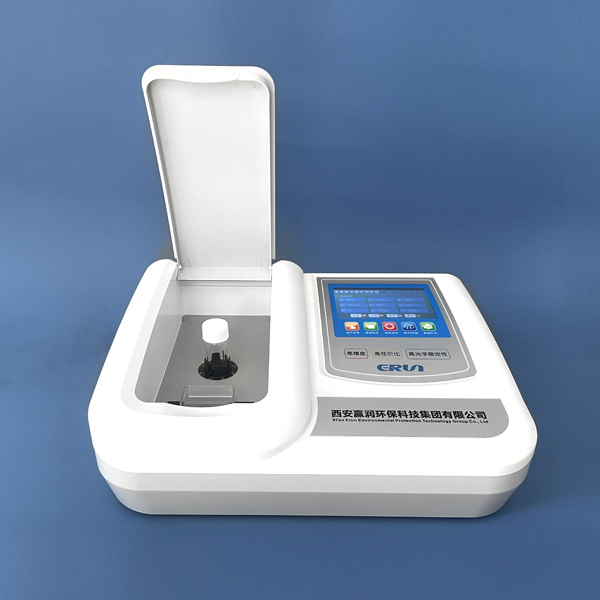The national standard method of ammonia nitrogen water quality meter, namely Nessler's reagent spectrophotometry, is a standardized method for determining the ammonia nitrogen content in water. Since its implementation, this method has become one of the important standard test methods in environmental monitoring in my country and is widely used in many fields. The following will analyze in detail the scope of application of ammonia nitrogen water quality meter in environmental monitoring:

1.Surface water monitoring
- Rivers and lakes: For flowing rivers or static lakes, the national standard method for ammonia nitrogen can effectively measure the ammonia nitrogen content in their water quality and provide data support for water eutrophication assessment.
- Reservoirs and landscape water bodies: Reservoirs are important reserves of drinking water, and their ammonia nitrogen content is directly related to water quality safety. Ammonia nitrogen monitoring in landscape water bodies is related to urban environment and public health.
- Offshore waters: For sea areas close to land, this method can monitor the ammonia nitrogen load brought by land-based emissions and evaluate its impact on the marine ecosystem.
2.Groundwater Monitoring
- Drinking water source monitoring: Groundwater is an important source of drinking water. By monitoring the ammonia nitrogen concentration in groundwater using the national standard method for ammonia nitrogen, we can keep abreast of the water quality of drinking water sources.
- Groundwater pollution tracking: Groundwater near industrial areas may be contaminated by ammonia nitrogen. Regular monitoring using national standards can help detect pollution early and take appropriate measures.
3.Domestic sewage monitoring
- Urban sewage treatment: Urban domestic sewage contains a high concentration of ammonia nitrogen. The national standard method for ammonia nitrogen can accurately reflect the sewage treatment effect and ensure the safety of the treated water.
- Leachate from domestic waste: The leachate generated from domestic waste landfills is a potential risk point for environmental pollution. The national standard method for ammonia nitrogen can be used to monitor its ammonia nitrogen content and guide the treatment and disposal of the leachate.
4.Industrial wastewater monitoring
- Chemical, pharmaceutical and other industries: The wastewater generated by these industries has high ammonia nitrogen content and must be strictly monitored before discharge. The national ammonia nitrogen standard plays a key role in this link.
- Agricultural processing industry: wastewater from livestock and poultry breeding contains a large amount of animal and plant protein, which produces a large amount of ammonia nitrogen after being decomposed by microorganisms. The national standard method for ammonia nitrogen can effectively monitor the pollution status of this type of wastewater.
5.Rain and snow monitoring
- Precipitation pollution research: By collecting and analyzing the ammonia nitrogen content in rainwater or snowwater, we can understand the deposition of pollutants in the air and provide a reference for atmospheric pollution research.
- Urban rainfall runoff: Ammonia nitrogen in urban rainfall runoff mainly comes from traffic emissions, industrial emissions, etc. The monitoring results are helpful for the control and management of urban non-point source pollution.
6.Monitoring of agricultural water use
- Farmland irrigation water: Agricultural water use is directly related to the safety and quality of agricultural products. The national standard for ammonia nitrogen can ensure that the water quality used for irrigation meets the needs of agricultural production.
- Fishery aquaculture water: The aquaculture industry has extremely high requirements for water quality. The national standard method for ammonia nitrogen can be used to monitor the ammonia nitrogen concentration in aquaculture water to ensure the healthy development of the aquaculture industry.
In short, when using ammonia nitrogen water quality tester for environmental monitoring, attention should also be paid to the standardized operation of the method to ensure the comparability and accuracy of the data. The ammonia nitrogen water quality tester produced by Yingrun Environmental Protection has advanced technical means, which can more accurately detect the water quality of the pollution source and help formulate more effective treatment measures. Continuous technological innovation and method optimization are also the key to improving the monitoring efficiency and accuracy of the instrument.Erun Environmental Protection Ammonia Nitrogen Water Quality Meter ERUN-97-A1 will play a greater role in environmental protection and water resources management and contribute to sustainable development.
